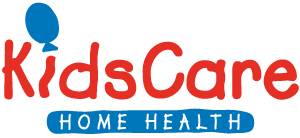
Nurses are the backbone of healthcare. They provide a unique blend of clinical skills and compassionate care that helps patients feel safe, supported, and understood. However, the high-stakes responsibility and emotional demands of patient care can lead to significant work-related stress, especially when working with children.
In a field where patient care is the priority, self-care often takes a back seat. That’s why stress management in nursing is essential, as it helps nurses maintain resilience while providing high-quality patient care. Today’s blog explores stress management in nursing. We’ll examine the factors that contribute to workplace stress, common signs to watch for, and outline stress reduction techniques for nurses to support holistic well-being.
Why Stress is So Common in Nursing
The National Council of State Boards of Nursing (NCSBN) reported that more than 138,000 nurses have left the workforce since 2022, citing stress, burnout, and retirement as key reasons. Although a subsequent 2024 study indicated that emotional exhaustion and workloads have levelled out since 2022, high levels of stress and burnout continue to impact the industry.
Several factors contribute to high stress in the nursing field, including high accountability for patients’ health, emotionally taxing work, demanding schedules, and administrative pressures. Nurses are often a patient’s lifeline, delivering the critical care necessary for health and healing. This level of care can be demanding and emotionally draining, especially for pediatric nurses. As children, young patients often struggle to communicate their symptoms, fears, or needs clearly, making assessment more challenging. Furthermore, a pediatric nurse’s care extends to the family, who often have high expectations for reassurance and communication.
A nurse’s work also involves a high level of critical thinking, which can be draining after long shifts. Stress as a nurse can also stem from performance pressure outside of care. This includes administrative and paperwork pressures, such as extensive documentation, regulatory requirements, and electronic health record management.
Signs of Nurse Stress and Burnout
Stress-related symptoms can present both physically and emotionally, both on and off the job. Naturally, these signs can vary from person to person, but the following indicators can signal a need for stress management:
Physical Symptoms:
- Exhaustion
- Sleeping problems
- Headaches
- Restlessness
- Chest pains
- Food cravings
- Accelerated heart rate
- Upset stomach or indigestion
Emotional Symptoms:
- Irritability
- Anxiety
- Depression
- Lack of confidence
- Feeling overwhelmed
Job Performance Symptoms:
- Avoiding difficult situations
- Trouble concentrating
- Unusual detached behavior
- Emotional outbursts
Effective Stress Reduction Techniques for Nurses

When the performance pressures outweigh the intrinsic rewards associated with pediatric nursing, it’s time to act. Fortunately, considerable attention has been given to stress management in nursing, particularly in the wake of the pandemic. In this section, we’ll outline five stress management techniques, followed by information about nursing interventions for stress reduction.
Deep Breathing & Grounding Techniques
When stress triggers the fight-or-flight response, breathing becomes shallow and rapid. Therefore, deep, intentional breathing is one of the most effective tools for regulating stress. When the pressures of a shift become too much and stress levels rise, here are a couple of breathing exercises that can help activate the body’s parasympathetic nervous system (i.e., the “rest and restore” response).
- Box breathing: Inhale for 4 seconds, hold for 4 seconds, exhale for 4 seconds. Repeat this cycle 4 to 6 times.
- Two-minute belly breathing: Place one hand on the abdomen, breathe in through the nose, letting the belly expand, then exhale slowly through the mouth. Do this for 2 minutes.
Quick On-Shift Mindfulness Practices
Although it can be difficult to find moments of peace during busy days, practicing small “micro-moments” to center oneself can help relieve stress and tension throughout the day. Some examples include stepping outside for a few minutes or finding a spot to practice a quick grounding yoga pose, such as the tree pose.
Progressive Muscle Relaxation (PMR)
Progressive muscle relaxation is a technique that helps relieve stress by helping relax the body for a quick reset. PMR targets one muscle group at a time, working to ease tension through a focused contraction-and-release method.
Begin by selecting a specific area or muscle group, such as the jaw or shoulders. Tense the muscles gently for 5-7 seconds, then let the tension relax, followed by a deep cleansing breath.
If time allows, move on to another muscle group.
Mindful Communication (SBAR)
SBAR stands for Situation, Background, Assessment, Recommendation. As a communication tool, SBAR can reduce stress by adding structure to moments that often feel chaotic. It’s a clear, concise way to communicate during a distressing or chaotic health or medical situation by focusing on the facts and solutions. This type of structured communication reduces uncertainty by giving nurses a predictable framework, which also helps lower emotional and cognitive stress.
Journaling & Emotional Debriefing
Journaling has been extensively studied and shown to improve mental health. The process of journaling, or keeping a record of your thoughts, feelings, and insights, can help release emotional stress. It can also lead to gaining a better perspective on a situation. The key to consistency is to find a journaling style that fits your lifestyle. Some find journaling first thing in the morning beneficial, while others may prefer recapping their day before bed. Journaling can be in paper or digital form. The goal is to write down what’s on your mind, positive and negative, in any format that is accessible.
Mindfulness-Based Stress Reduction (MBSR) for Nurses
Mindfulness-Based Stress Reduction (MBSR) is a structured, evidence-based program developed by Jon Kabat-Zinn. It offers a structured program that typically includes mindfulness meditation, body scanning, gentle yoga, and exercises in non-judgmental awareness. Studies have shown that MSBR can significantly lower nurses’ levels of emotional exhaustion, burnout, and anxiety.
Nursing Interventions for Stress Reduction

Regular, structured interventions can also help with stress management in nursing. These efforts take various forms, yet all aim for the same outcomes: reducing stress, strengthening communication, and promoting long-term resilience in nurses.
Peer Support Programs
These programs offer a safe space for nurses to share experiences and express emotions. By sharing with peers, participants benefit from feedback and encouragement from colleagues who understand the job’s challenges. Peer support programs can include mentorship, buddy systems, or informal check-ins. Regular peer support also helps reduce feelings of isolation and promotes early recognition of stress or burnout.
Debriefing Sessions
Taking time to debrief after high-stress days, critical incidents, or emotionally intense shifts helps nurses process their experiences in a structured environment. Typically facilitated by trained staff or team leaders, debriefing offers nurses the opportunity to discuss what happened, what went well, and what could be improved. These sessions also provide a healthy outlet for emotional release and help prevent the buildup of compassion fatigue.
Resilience Training
Resilience training teaches practical skills like adapting to challenging situations and maintaining emotional balance. These programs can include mindfulness techniques, cognitive reframing, emotional regulation strategies, and communication skills. Resilience training supports stress reduction for nurses by equipping them to manage challenges. Other benefits? Improved confidence, decision-making, and overall well-being.
Stress Monitoring Systems
Stress monitoring systems help track stress levels and identify early warning signs of burnout. Monitoring forms can include well-being surveys, digital check-in platforms, or wearable technology. These systems prompt stress management in nursing by allowing leadership to respond proactively with resources or workload adjustments. Stress monitoring also helps create a more transparent, supportive culture where well-being is a priority.
How Healthcare Organizations Can Support Nurses
The emotional stress of working with vulnerable young patients can be overwhelming. Therefore, making self-care a priority and employing these stress management techniques for nurses can help support positive mental health and well-being. However, nurses also need their management’s support to ensure a supportive, positive work environment.
Scheduling & Workload Management
Shift scheduling definitely affects stress for nurses, since patients’ needs don’t follow a set schedule. Therefore, it’s up to management to develop scheduling strategies to combat overworking or understaffing. Communication is critical for healthy workload management, and nurses should be encouraged to advocate for themselves just as they advocate for patients.
Safe Staffing Ratios
The purpose of safe staffing ratios is to ensure nurses have a manageable number of patients, thereby reducing workload and elevating the quality of care. Appropriate staffing levels help nurses perform their duties without rushing, decreasing the risk of errors and emotional exhaustion. Safe staffing supports stress reduction for nurses by promoting their well-being through more sustainable work environments.
Mental Health Resources & EAP Programs
Providing access to mental health resources and Employee Assistance Programs (EAPs) makes nurses feel supported. Services may include counseling, crisis intervention, stress-management coaching, and referrals to specialized care. When leadership promotes these programs, nurses feel recognized and valued, and are more comfortable seeking help.
Creating a Supportive Workplace Culture
A supportive workplace culture makes nurses feel respected, heard, and appreciated. Employers can foster this type of culture by promoting open communication and recognizing staff contributions. A supportive environment also encourages teamwork and provides opportunities for professional growth. Support from the top down enhances job satisfaction and psychological safety, ultimately strengthening retention and improving patient care quality.
At-Home Stress Management Techniques for Nurses
All of these stress reduction techniques for nurses can help address the emotional and mental toll of caring for others. However, overall well-being requires a holistic approach that includes diet, exercise, and sleep management. Prioritizing a healthy diet, regular exercise, and enough sleep not only benefits the body and brain but also helps reduce stress. Creating healthy habits does not have to be life-changing. It can involve a few simple choices like going to bed earlier, taking a 15-minute walk twice a day, or cutting down on processed foods.
When to Seek Professional Support
When stress reduction techniques for nurses have little effect, and the toll begins to interfere with daily functioning, professional support is the next step. Common indicators of burnout include persistent irritability, difficulty concentrating, disrupted sleep, withdrawal from coworkers or loved ones, or increased errors. These early warning signs often indicate that stress is building beyond what typical coping strategies can manage.
If stress or burnout symptoms escalate, nurses can reach out to their organization’s Employee Assistance Program (EAP) for support. Many healthcare facilities also offer on-site or virtual mental health resources, peer support lines, or wellness coordinators. Outside of work, nurses can contact licensed therapists, primary care providers, or crisis hotlines for immediate support. Seeking help is a sign of strength and ensures nurses receive the care they need to continue caring for others.
Conclusion
Self-care supports better patient care. Even caregivers need care because one can’t give what they don’t have. Therefore, stress management for nurses is essential to providing the best quality of care. Prioritizing self-care also supports greater job satisfaction and a higher overall quality of life.
Looking for a flexible career in pediatric home health nursing? KidsCare Home Health is an in-home pediatric healthcare agency providing nursing and therapy services to children across the county. Not only do we offer competitive pay and comprehensive benefits, but we also provide a supportive environment with resources to grow your career as a pediatric nurse.
KidsCare Home Health is consistently recognized as a top workplace because we truly value our clinicians and employees. We believe exceptional care starts with caregivers who feel respected, appreciated, and supported.
Contact KidsCare Home Health to Learn More Today
FAQ – Stress Reduction for Nurses
What are the best stress reduction techniques for nurses?
Effective stress reduction techniques include breathing exercises, mindfulness practices, progressive muscle relaxation (PMR), mindful communication (SBAR), and journaling. All of these techniques are discussed in detail in the article above.
What causes the most stress for nurses?
High patient loads, staffing shortages, and the emotional demands of patient care are leading causes of stress as a nurse.
What is MBSR?
MSBR stands for Mindfulness-Based Stress Reduction. It is a structured, evidence-based program that typically includes mindfulness meditation, body scanning, gentle yoga, and exercises in non-judgmental awareness.
When should a nurse seek professional mental health support?
Signs of unmanageable stress or burnout often include persistent irritability, difficulty concentrating, increased errors, disrupted sleep, or unusual withdrawal from coworkers or loved ones.















